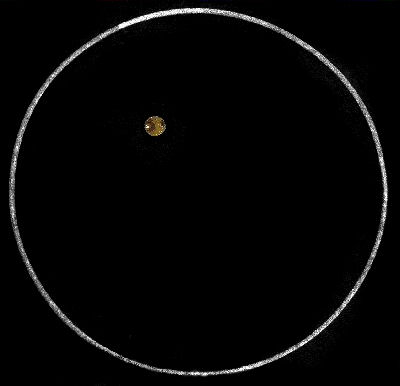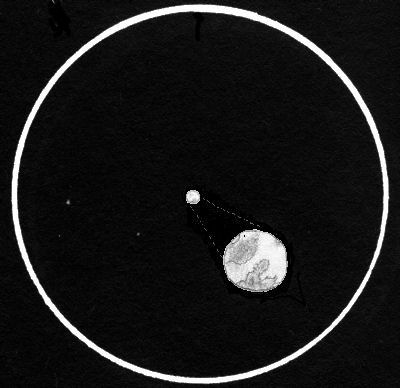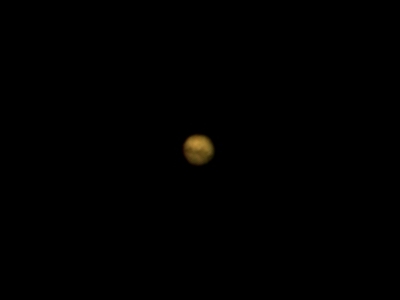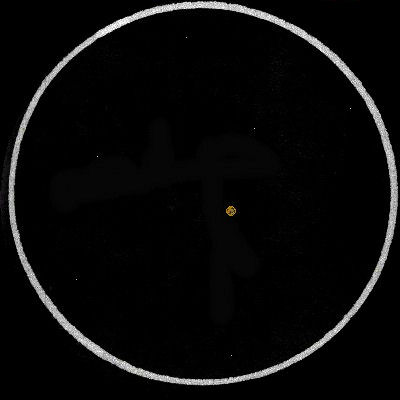|
 |
|
2.4'' refractor 117x March 15, 1982 3:00 UT Some faint dark patches can be seen on the surface of the disk. |
10.1" reflector stopped to 3.8"(~f/12) 192x with green filter April 11, 1999 4:50 UT A large dark area towards left side of the disk and a smaller dark patch on the right side. A brighter area appears nestled in the large dark area on the left edge. This is Mars' south polar cap. North is to the lower right. |
|
 |
 |
|
10.1" reflector 231 x with red filter March 11, 2010 1:40 UT Sketch showing Mars image size at 231x and a blow-up view of the details. Can see some dark markings and white appears to be a white speck at about 10 o'clock and 4 o'clock on the disk (the latter is the Martian north polar cap). The large dark area on upper left part of the disk is Margaritifer Sinus and Aurorae Sinus, the rightmost part of which contains Vallis Marineris, the largest canyon in the Solar System. The "C" shaped dark area at lower right is Niliacus Lacus, part of Mare Acidalium - the top part of the C are Achillis Fons and Idaeus Fons.; both major dark areas are separated from each other by a brighter region, this is Chryse Planitia or "Plains of Gold" where Viking 1 landed. Central Meridian at this time is approximately 45 degrees west longitude. North is at 5 o'clock, East at 2 o'clock |
10.1" reflector stopped to 3.8" Mallincam DS432CTEC coupled with 2.5x barlow Exposure = 0.002696 seconds, Gain = 7972 October 18, 2020 04:53 UT Photo of Mars just past opposition. Image approximates what is seen at about 175x (70x times 2.5x barlow), blown-up to double the size. Major surface features visible are Syrtis Major (dark area to the lower right) and darker southern highlands. Mars south pole is at approximately 2 o'clock slightly inside the limb. |
